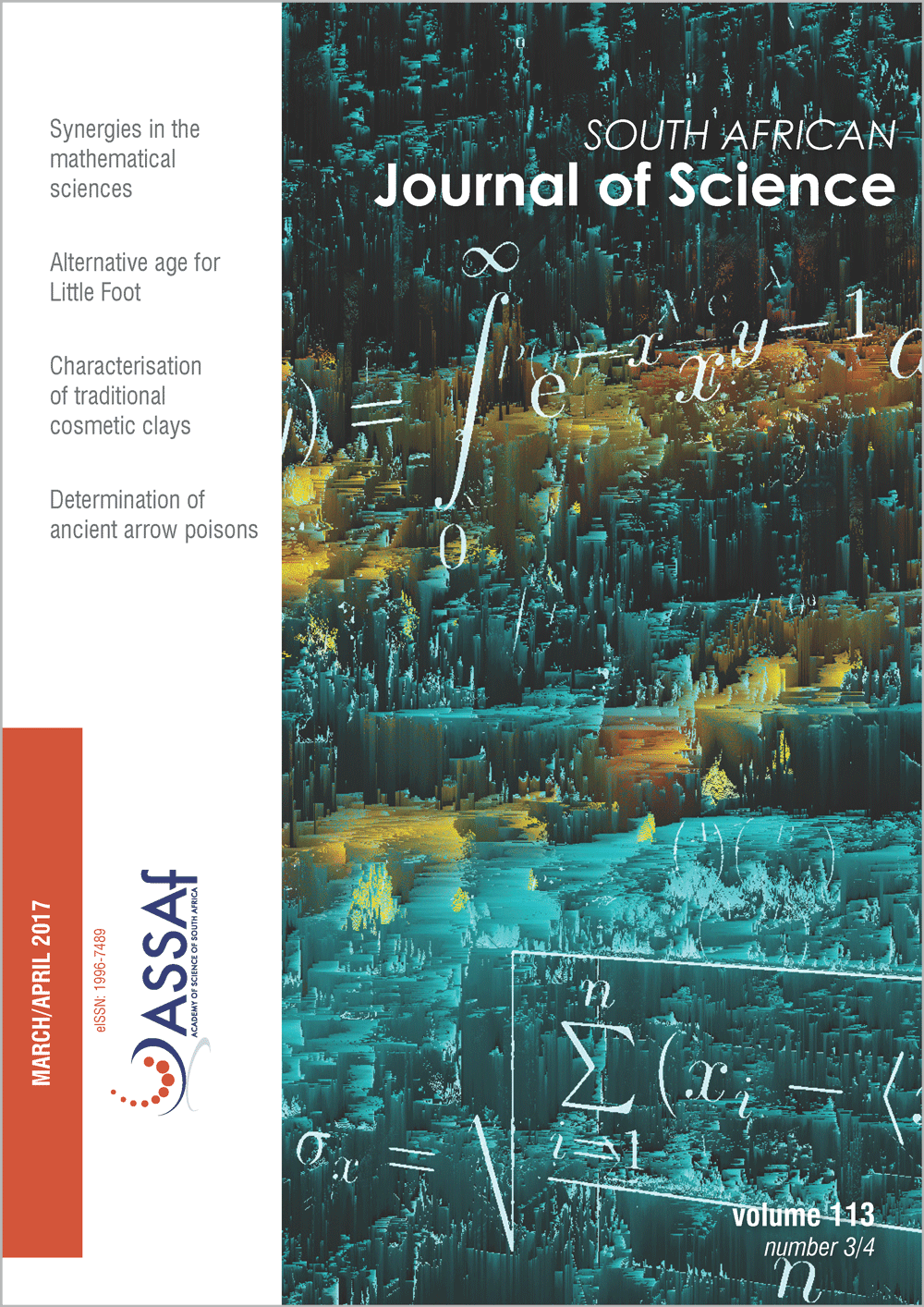Potential for identifying plant-based toxins on San hunter-gatherer arrowheads
DOI:
https://doi.org/10.17159/sajs.2017/20160210Keywords:
San hunting poisons, southern Africa, liquid chromatography, accurate mass-mass spectrometry, archaeological analysisAbstract
The antiquity of the use of hunting poisons has received much attention in recent years. In this paper we present the results of a pilot study designed to detect the presence of organic compounds, typically of less than 1200 Da, from poisonous plants that may have been used as hunting poisons in the past. We used ultra-performance liquid chromatography connected to a Synapt G2 high-resolution MS-QTOF mass spectrometer (UPLC-QTOF-MS) to provisionally identify plant-based toxins present in (1) extracts of fresh plant material, (2) a blind control recipe consisting of three plant ingredients and (3) a Hei||om arrow poison of unknown ingredients. Although not all expected toxic compounds were identified, those that were identified compared favourably with those reported in the literature and confirmed through databases, specifically the Dictionary of Natural Products and ChemSpider. MS/MS fragmentation patterns and accurate mass were used for tentative identification of compounds because archaeological residues usually contain insufficient material for unambiguous identification using nuclear magnetic resonance. We highlight the potential of this method for accurately identifying plant-based toxins present on archaeological artefacts and unique (albeit non-toxic) chemical markers that may allow one to infer the presence of toxic plant ingredients in arrow poisons. Any chemical study of archaeological material should consider the unique environmental degradative factors and be sensitive to the oxidative by-products of toxic compounds.
Significance:- Methodology is presented for the identification of ancient plant-based arrow poisons.
Published
Issue
Section
License

All articles are published under a Creative Commons Attribution 4.0 International Licence
Copyright is retained by the authors. Readers are welcome to reproduce, share and adapt the content without permission provided the source is attributed.
Disclaimer: The publisher and editors accept no responsibility for statements made by the authors
How to Cite
- Abstract 760
- PDF 780
- EPUB 209
- XML 260













.png)